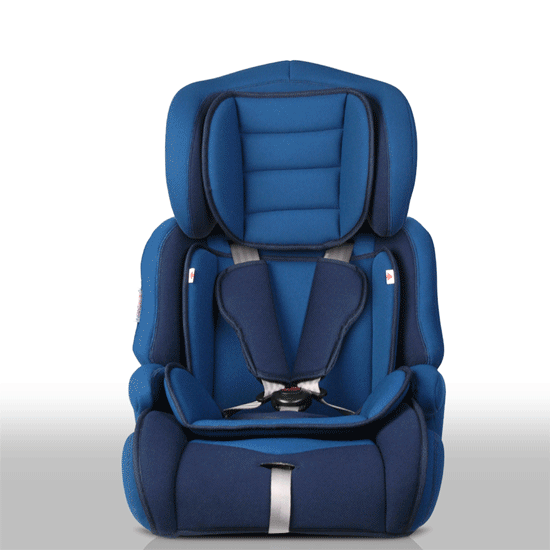If there is one place where safety is of the highest importance, it’s when traveling in a moving vehicle.
It is something that every parent should be concerned about.
The security that a car seat offers a young child while in a vehicle is vital as it helps to keep them safe when the car is moving and in the event of a collision
Dr. Hoffman, chair of the American Academy of Pediatrics (AAP) Council on Injury makes it very clear – a car seat should be used correctly on every journey, as they reduce the risk death or serious injury by 70%.
With all of the varying state laws that surround the use of car seats and the huge number of car seat products that are available to buy, we understand that it can be so confusing to decide which car seat to use.
This ultimate car seat guide aims to give you a clear and easy to understand look into the world of car seats so that you can distinguish between the different types and gain an understanding of the requirements that go into choosing a car seat.
So if you are a little bit confused when it comes to choosing a car seat, whether you are expecting a child or have multiple kids at different ages, this ultimate car seat guide will help you understand how to choose the best car seat for your circumstances.
Types of Car Seat
There are several types of car seat that suit different situations, the right type for your circumstances will typically depend on the age or weight of your child as well as state laws. New parents, for example, will start out with a rear-facing car seat or a combination car seat, as infants need that extra head and neck support.
Rear Facing Car Seat
As mentioned above, rear-facing car seats (also known as infant car seats) allows babies and young children who can’t fully support themselves and sit upright to ride in the car. Their shape is similar to that of a bassinet, but have usually had a carrying handle to double up as a carrier.
They have weight and height limitations which usually would prevent children aged from 1 to 2 years old from using them. But usually, children and parents would prefer a forward facing car seat at this point so that the child can interact with the rest of the family.
The rear-facing car seat position is the safest of all and it’s recommended by the AAP that a child stays in this position until they reach the height and weight limits set by the manufacturer of their seat.
Forward Facing Car Seat
A forward facing car seat still offers ample protection to the child and also still stabilizes them while traveling in the car. You would move your child onto a forward facing seat once they reach the height and weight limits of their rear-facing seat.
The forward facing seat should contain a harness to keep the child securely in place and ample side protection to increase shock absorbance in the case of an impact.

Booster Seat
A booster seat is to be used when the child has exceeded the limits of their forward-facing car seat. The car seat belt is used to hold the booster seat and the child into position. The point of the booster seat is so that the seat belt fits the child more securely.
Once the child has grown out of the booster seat, they can then go on to sitting in the car using the car seat belt alone as their restraint, like any other passenger. However, for optimal protection, all children of up to at least 12 years of age should sit in the back seats.
Combination Seats
Many models of car seat are 2 in 1, allowing you to have a rear facing and forward facing car seat in one product. This increases the lifespan of the product for you, allowing you to not have to buy a new seat when your child grows.
There are also models that are 3 in 1, and also convert into a booster seat, so it can be used all the way through your child’s young life. These seats can be more expensive, as they have more moving parts, but better value for money because you are not spending on separate products.
Travel Systems
Even though travel systems are not distinctly a certain type of car seat, they are included because they are purchased as an all in one set. A travel system is a set which contains a travel car seat (usually a combination car seat) that’s also compatible with its own stroller so that you can easily remove the car seat with baby onto the stroller with less hassle.
A great benefit to a travel system is that you can move your baby from the car to their stroller without waking them up. They’re also usually quite lightweight and since your baby won’t be able to use most strollers until they are 6 months old, they are very convenient in the early years.
Car Seat Safety
The way in which you install and use a car seat does depend on its type. It’s important that you read the instruction manual for your car seat thoroughly before using it and consult it to ensure that you have done everything correctly.
The following are general factors of safety for you to consider and are not specific to any particular model of car seat, and so always refer to your car seat models user manual for specific advice.
Car Seat Condition
Be cautious of car seats that have been used previously. It may not be immediately noticeable to you if there are any flaws in its condition. You always want your child’s car seat to be in top, working condition before use with no damage at all.
It’s also advisable to buy a car seat new because safety regulations can change regularly and so newer models will be in compliance with the latest federal standards (see more below).
Before every use, check the condition of the car seat, make sure that it is secure in place and there is no damage to the base, no fraying to the harness straps and that the buckle system has no bends.
Installation
The installation of the car seat is most important as if installed incorrectly the car seat may not provide security or provide the child with any protection and may also pose a risk to the child.
Car seats are secured in place with the seat belt which is thread through a specific position on the car seat to hold it tightly in place. Some car seats, such as the Britax ClickTight range have a mechanism that makes it easier for you to ensure the seat is secure.
The seat should not move either side to side or forward and back more than 1 inch from the path of the seat belt. If it does, this means the seatbelt needs to be tightened. A trick to keeping the seat in place is to use your knee while you fasten the seat belt around it.
Using the Harness
For very young children in rear and front facing car seats, a 5 point harness is highly recommended as it secures them from all sides and prevents them from slipping in any direction.
Ensure that the harness is fastened and secure snugly around your child. The buckle for the harness should be below your child’s shoulders. Some models have a clip which attaches the chest harness straps, ensure this is in line with your child’s armpits.
Limitations
Never exceed the weight and height limitations that are set by the manufacturer. They have tested their seat and deemed it effective up to the limitations that they have set and so it would be unsafe for you to exceed them.

If in an unfortunate scenario where an impact did occur and the car seat was not effective and you have disregarded the manufacturer’s instructions, they would not bear any responsibility.
Car Seat Laws and Certifications
As children’s safety products, car seats have to undergo strict certification to ensure that you are getting a product that performs well and does provide your child with the safety that they require.
All car seats, no matter what type or design, must meet the federal standards imposed by the National Highway Traffic Safety Administration (NHTSA) which mandate how the product performs for children up to 80 pounds in weight, in a car crash of 30mph.
The car seats are tested under simulated car crash scenario and the standards also require that the product has certain degrees of padding around the head and neck for children who weigh under 22 pounds and meets flammability and buckle release pressure standards.
There are also option certifications that the manufacturer can acquire and apply to their product by undergoing more rigorous testing that is overseen by non-federal certifying bodies such as the ASTM.
The laws governing the use of car seats also varies between states which can be confusing if you are traveling and crossing state lines. It’s extremely important that you familiarize yourself with the car seat laws of the states you are traveling through before setting off on your journey so you can make sure that you are prepared.
Car Seat Recalls and Warranties
Warranties between manufacturers can vary but typically last for up to one year. They usually cover you for a repair or exchange of the product given that there are any defects that you have noticed since the time you made the purchase.
Be aware that warranties do not cover any misuses of the product or if the manufacturer’s instructions and user manual were disregarded. This includes if the seat was not used correctly or has been damaged accidentally.
From time to time companies will notice that a defect has been reproduced in the production line and will have a recall of the product so that you can be refunded or have your seat exchanged for a non-defective one.
It’s in your interest to register the car seats you buy with the manufacturer so that they can let you know if a recall has occurred. You can also check for car seat recalls on the NHTSA website by using the VIN number found on your car seat.